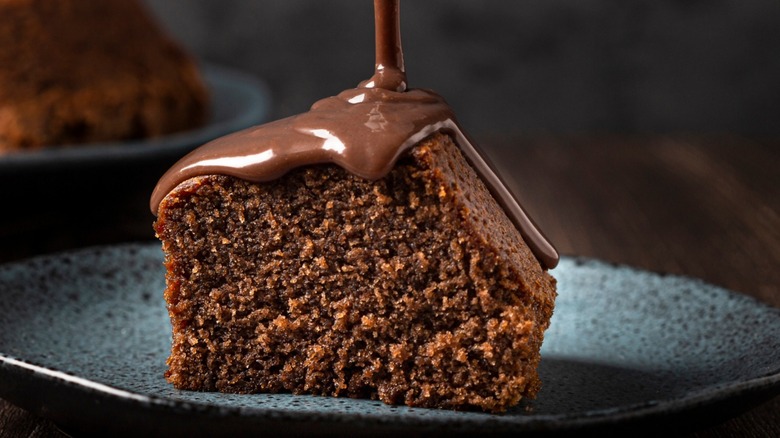Why Cocoa Butter Is The Most Expensive Ingredient In Chocolate
Chocolate is a central component to essentially all that is good in this world. No matter what form it takes, be it truffles, cookies, or ice cream, you can't go wrong with it. Despite its ubiquitous consumption and availability, there are many moving parts that go into making your favorite chocolatey treats. It isn't just about the cacao beans or sugar — one of the most unexpected ingredients is also the most expensive.
Cocoa butter is a naturally occurring fat found in cacao beans that's integral to making a bar of chocolate. It helps create a smooth texture, a solid shape, and a melt-in-your-mouth quality. The flavor of cocoa butter by itself is rather mild. However, this critical ingredient is chocolate's most expensive ingredient, because of how much in demand it is. Cocoa butter is not only used in the food industry but also in the beauty industry. The same ingredient that makes your skin silky-smooth in lotions and other cosmetics does the same thing to chocolate. And what would chocolate be without its creamy consistency? Not very good.
Cocoa butter is costly to produce
Chocolate is an ancient commodity. According to the International Journal of Environmental Research and Public Health, the consumption of cocoa is thought to span back to the Maya of Central America, who considered chocolate to be the "food of the gods." Back then, dried and ground cocoa beans were mixed with water and spices like cinnamon and pepper, which created a strong, bitter drink. Since then, love for chocolate has never ceased, and the substances required to make our treats remain in high demand — particularly the fat derived from cacao beans.
Before being processed for your favorite dessert or beauty products, cocoa butter looks rather unappealing. Pale yellow in color when derived from its source, the butter must then be fermented for use. The financial cost is high to produce, largely because cocoa butter does not meet the demands of the market. Crops suffer damage every year, which is only getting worse due to climate change. This reality contributes to the high markup when it comes to consumers. The inability to meet the demand for cocoa butter is so high that the industry has come up with alternatives to keep up. Palm oil, soybean oil, and shea butter are the closest to the chemical properties of cocoa butter and more inexpensive.
Uses of cocoa butter
The next time you feel bad about indulging too much in chocolate, remind yourself there are many benefits to the snack. Per WebMD, many of these benefits are derived from cocoa butter, which could add longevity to the lives of people who use it. Cocoa butter is a source of Vitamin E, which helps support healthy vision, skin, reproduction, blood, and skin health. The natural fat, applied topically, seals moisture in the skin and can treat ailments such as eczema and dermatitis, and even lower the risk of skin cancer by offering protection from UV rays.
Cocoa butter is also a handy resource for cooking. When it isn't being used to make chocolate a silky delight, it also benefits other avenues around the kitchen. You can melt cocoa butter and use it as a cooking oil, for example. This practice is more popular with sweet dishes, because the butter does have a slightly chocolatey aroma. It also has a high smoke point, which should relieve anxiety about cooking at high temperatures. With the possibilities practically endless, it makes sense why cocoa butter is in such high demand.


